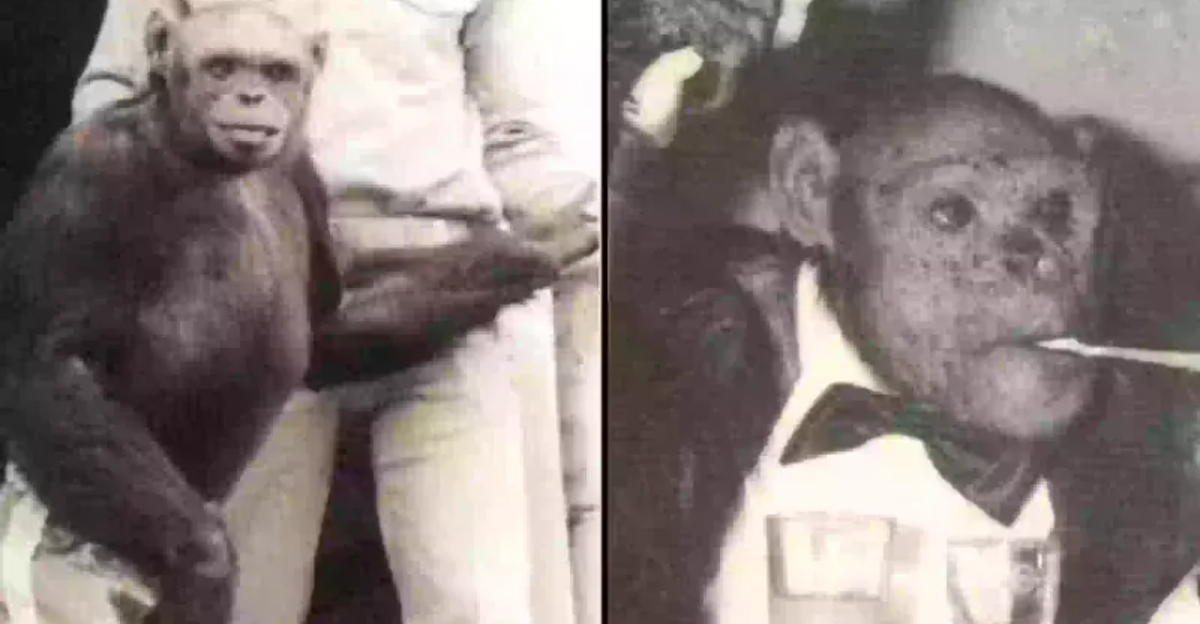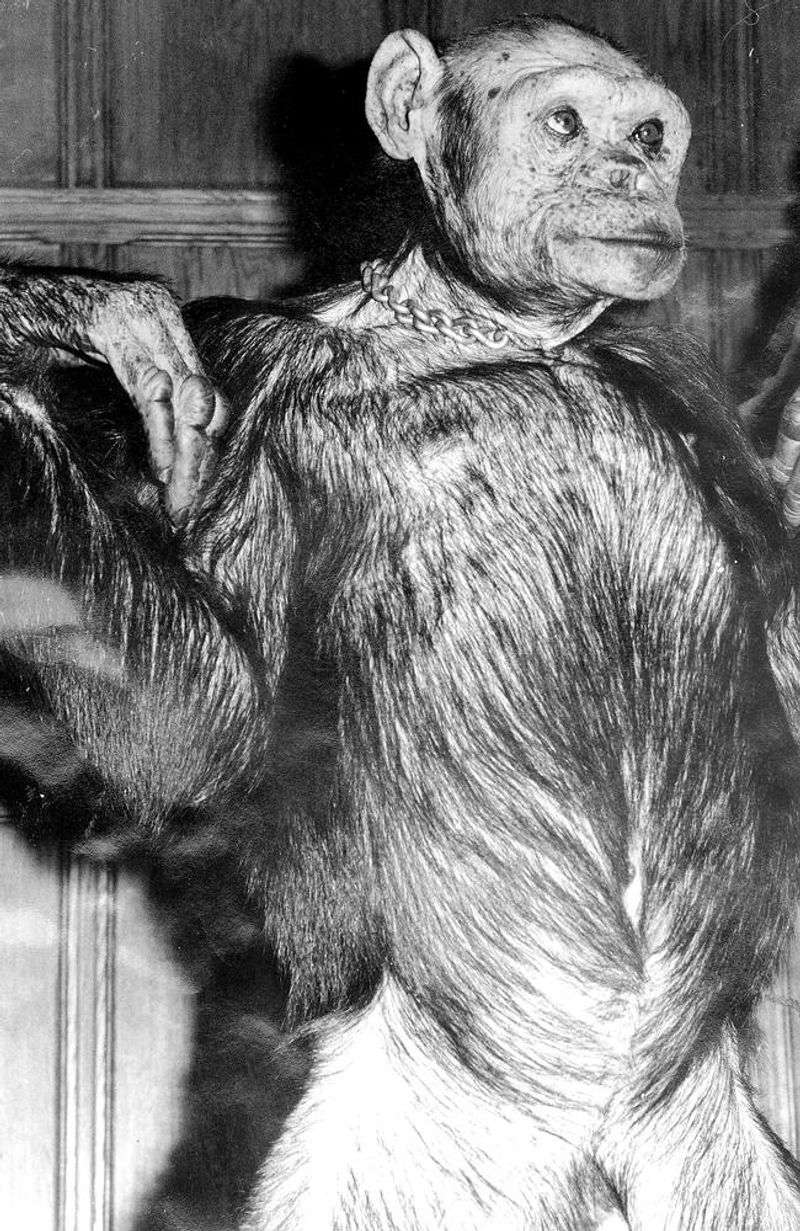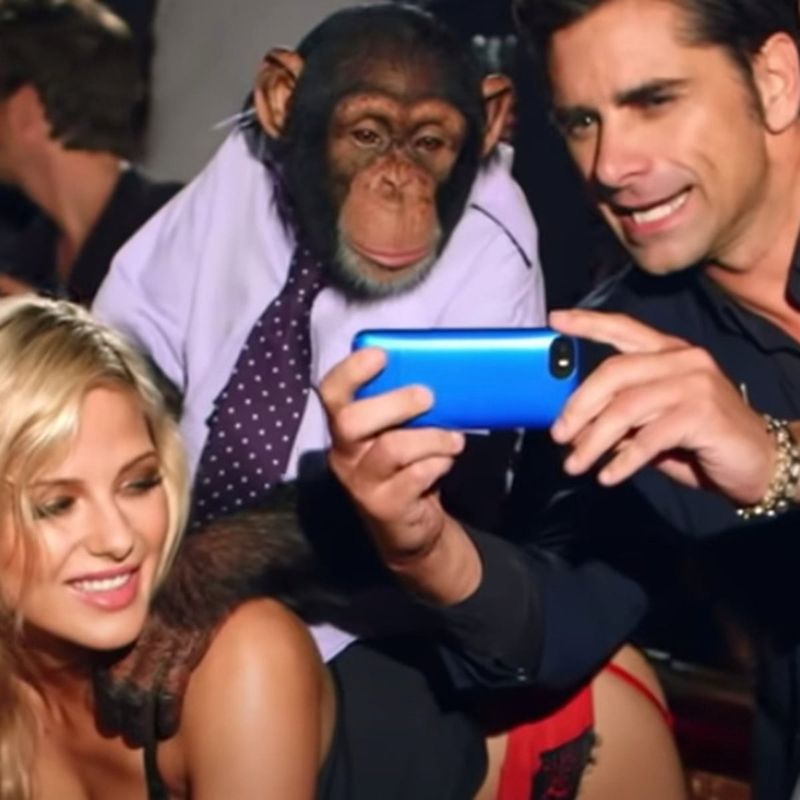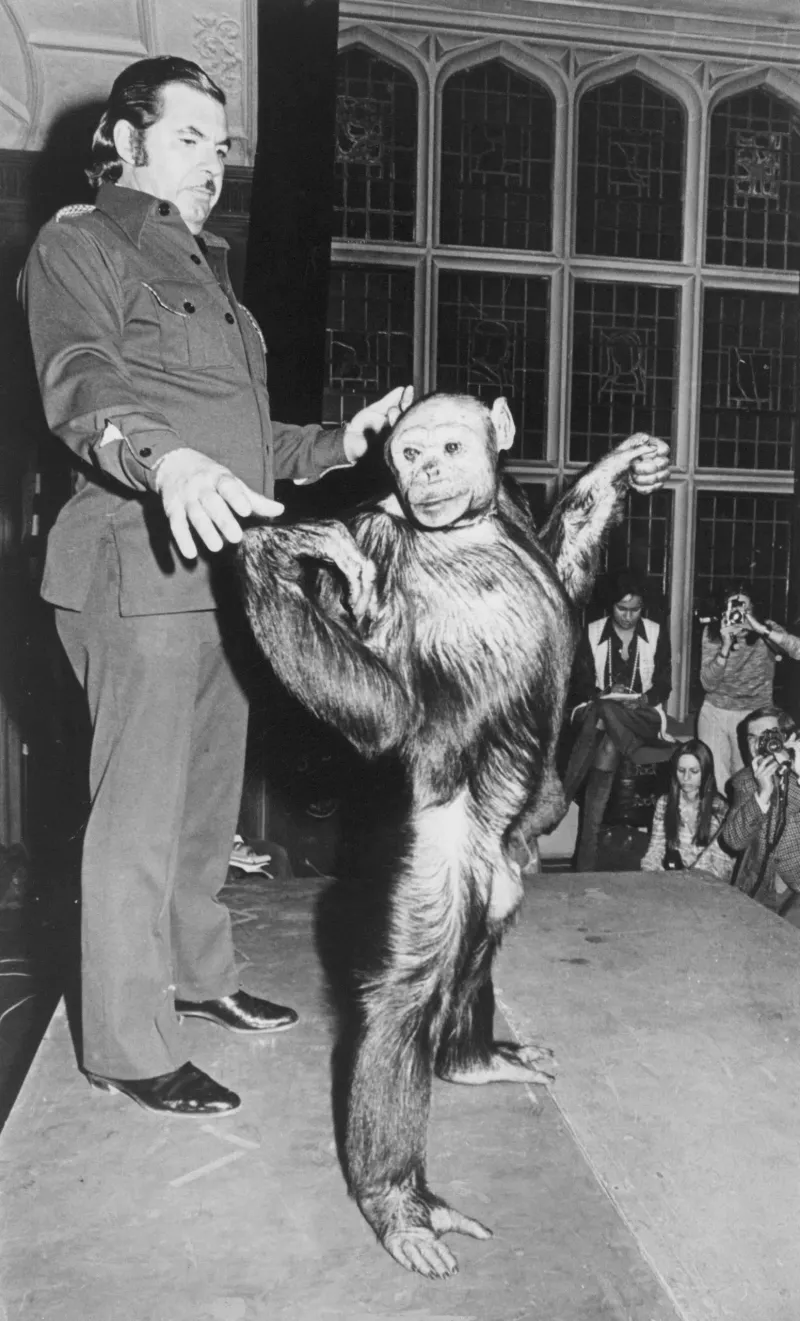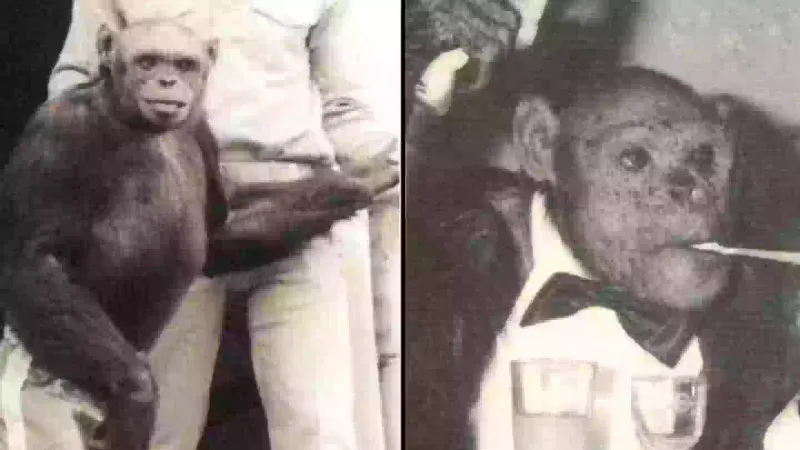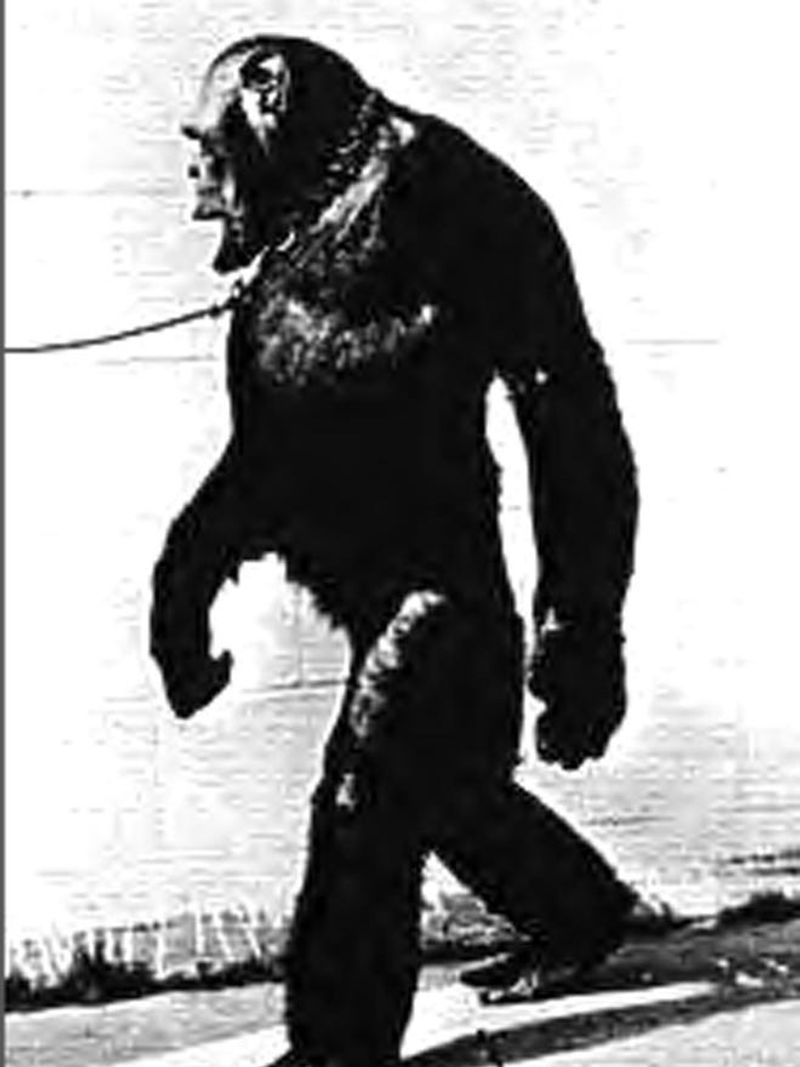In the 1970s, a peculiar chimpanzee named Oliver captivated the world with his human-like traits. Unlike other chimps, Oliver walked fully upright on two legs and had facial features that seemed oddly human. His story sparked wild theories about him being a human-chimp hybrid or ‘humanzee,’ leading to fame, exploitation, and scientific investigation that continues to fascinate people today.
The Mystery Begins: Oliver’s Unusual Appearance
Standing upright with an eerily human gait, Oliver looked nothing like typical chimpanzees. His head was unusually round and bald, with a flatter face and prominent ears that gave him an almost human profile.
Most striking was his consistent bipedal walking—not the occasional standing seen in other apes, but a natural, full-time upright posture. He even developed calluses on his feet rather than his knuckles!
Adding to his otherworldliness, Oliver had a unique scent that caused other chimps to reject him. These distinctive features fueled speculation that he might be something entirely new to science.
The Human-Like Behaviors That Shocked Everyone
“Would you care for a cup of tea?” Oliver could seemingly understand this question, preferring to sit in chairs and drink from cups rather than behave like other chimps. He mixed his own drinks, enjoyed coffee with sugar, and reportedly even developed a taste for whiskey.
Morning routines revealed his most human-like tendencies. He’d prepare and bring coffee to his caretakers, Frank and Janet Burger, then attempt to shave alongside Frank, mimicking the motions.
Perhaps most unsettling was his apparent attraction to human women rather than female chimps, creating uncomfortable situations that eventually led to his sale.
Fame and Exploitation: Oliver’s Time in the Spotlight
Japanese businessmen paid $30,000 to display Oliver in 1976, parading him through Tokyo in a tailored suit. Thousands lined up to see the supposed missing link between humans and apes.
Scientists conducted embarrassing public examinations, including tests to determine if he would mate with a female chimp. The results? He showed no interest in the female chimp but disturbingly displayed attraction to a human female researcher.
American media wasn’t far behind in the exploitation. The National Enquirer ran sensational stories about the “Chimp-Human,” while television specials featured Oliver as a freak of nature, cementing his place in pop culture.
The Dark Years: From Celebrity to Laboratory Subject
After his fame faded, Oliver’s life took a grim turn. Sold to the Buckshire Corporation in 1989, he spent nearly a decade confined to a tiny 5×7-foot cage—barely larger than his body.
The once-celebrated creature became a laboratory subject for hepatitis vaccine testing. Hidden from public view, his existence was reduced to a specimen number.
His eyesight deteriorated completely during this period. Arthritis twisted his once-upright posture, and without enrichment, the intelligent being who once mixed drinks and used tools existed in a state of neglect that animal welfare advocates later called “torture by isolation.”
The DNA Verdict: What Science Finally Revealed
“What is Oliver?” The question lingered for decades until geneticist Dr. John Ely finally conducted definitive testing in 1996. The results? Oliver possessed 48 chromosomes—exactly like any other chimpanzee and not the 47 that would indicate a human-chimp hybrid.
Further analysis revealed something unexpected, though. Oliver’s mitochondrial DNA showed he belonged to a central African chimpanzee subspecies rarely seen in America.
His unusual features weren’t evidence of being part-human but rather represented normal variation within chimpanzees from a region that had sent few representatives to Western zoos or labs.
Sanctuary and Redemption: Oliver’s Final Years
Rescue came in 1996 when Primarily Primates sanctuary in Texas offered Oliver his first taste of dignity in years. Wally Swett, the sanctuary’s founder, was moved to tears seeing the famous chimpanzee reduced to a hunched, blind shell of his former self.
For the first time in a decade, Oliver felt grass beneath his feet. Caretakers developed special enrichment activities for his blindness, using scents and sounds to stimulate his mind.
Though he never fully recovered physically, Oliver’s gentle nature returned. He lived peacefully until his passing in June 2012 at the impressive age of 55—finally treated as a remarkable being deserving of respect.
Legacy: Why Oliver’s Story Still Matters Today
Oliver’s tale serves as a powerful reminder of our complicated relationship with our closest evolutionary relatives. His exploitation raises uncomfortable questions about the ethics of using intelligent beings for entertainment and research.
Scientists now recognize that chimpanzees display far more variation in appearance and behavior than previously thought. What seemed alien about Oliver—his upright walking, his facial features—falls within the natural spectrum of chimpanzee diversity.
Perhaps most importantly, his story challenges us to reconsider how we define humanity itself. Was it Oliver’s human-like traits that made us care about him, or simply our recognition of another conscious being deserving of compassion?
